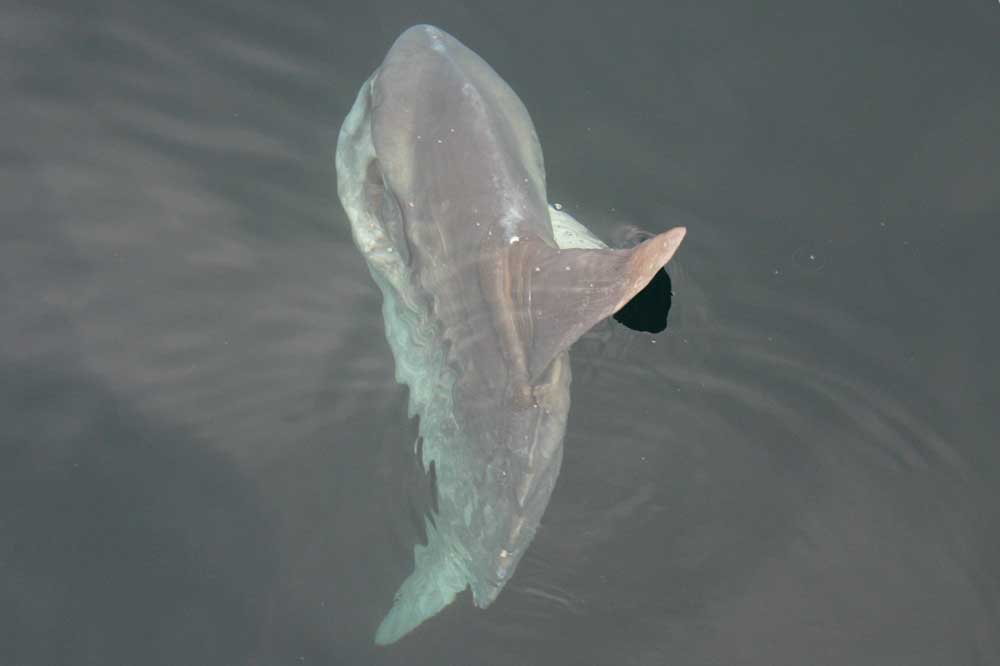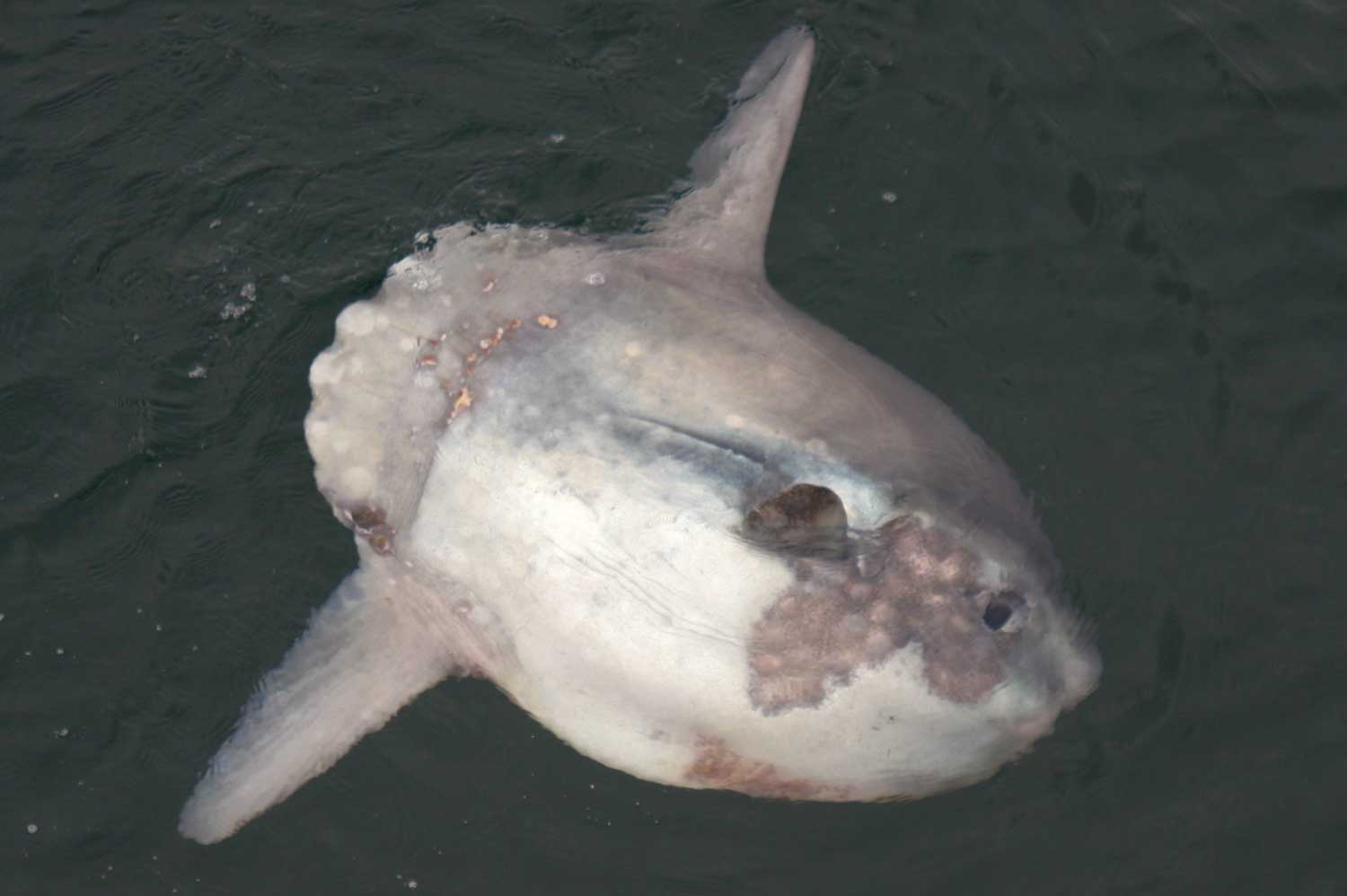
Latin: Mola mola
Gaelic: Iasg gréine
CETACEAN FACTFILE:
Months: June – September
Length: Up to 3.3 metres
Range: Tropical to warm temperate waters worldwide
Threats: Marine litter, pollution, hunting
Diet: Mainly jellyfish
PHYSICAL DESCRIPTION
The very distinctive appearance of this fish makes it quite easy to identify. It is the heaviest bony fish, growing to 3.3 metres in length and weighing up to 2,300 kg. The body is large, laterally flattened and round in shape; the Latin mola, meaning millstone, alludes to its shape. The most striking features are the dorsal and anal fins, which are elongated and can measure up to 3.3 metres from tip to tip. The head is blunt with a small, beak-like mouth. There is no true tail; instead a short, rounded structure (the clavus) adds to the overall rounded body shape but does not assist with propulsion. Sunfish are usually silvery-grey to dark-grey with thick, leathery skin.
BEHAVIOUR
Sunfish are commonly seen ‘basking’ on their sides at the surface. It has been suggested that presenting the side of the body at the surface allows for ‘thermal recharging’ following a dive in deep, cold water. Sunfish swim by moving the dorsal and anal fins, rather than by moving the tail. They can carry many parasites on their skin, and may use several techniques to remove them. Some individuals have been seen basking at the surface to allow seabirds to peck parasites from the skin and groups of sunfish are known to frequent kelp beds to allow certain fish to feed on the parasites. They have also been known to breach, possibly in an attempt to dislodge parasites from the skin. They are normally seen on their own in the Hebrides, although in other areas they are seen in pairs or in small groups.
HABITAT AND DISTRIBUTION
Sunfish are present in all oceans of the world, but seem restricted to waters warmer than about 10°C. Contrary to popular belief, they spend most of their time submerged at depths of 200 to 600 metres. They are summer visitors to the Hebrides, probably entering UK waters to feed; the winter sea temperatures are too cold for them to be resident year-round but the seasonal movement patterns of sunfish are poorly understood.
FOOD AND FORAGING
Jellyfish make up a large part of the sunfish diet, and they will also feed on small fish, squid, crustaceans, zooplankton and eelgrass. Water is sucked in and pushed out of the mouth rapidly to break up soft-bodied prey. The beak can break up harder bodied prey, whilst teeth in the throat further grind food before it is swallowed. The range of prey taken indicates that sunfish forage at various depths, from the surface to the seafloor.
STATUS AND CONSERVATION
Sunfish may be predated upon by sharks, sealions and killer whales. Sunfish meat is considered a delicacy in some Asian countries but it is generally not thought to be good to eat, and its sale in the European Union is banned. They are at greater risk of being caught as bycatch, and they may also become entangled in fishing gear. It is likely that sunfish commonly encounter plastic bags in the ocean and they may swallow them if mistaken for their jellyfish prey. Collisions with boats may also be common with sunfish, causing injuries and possibly death.


